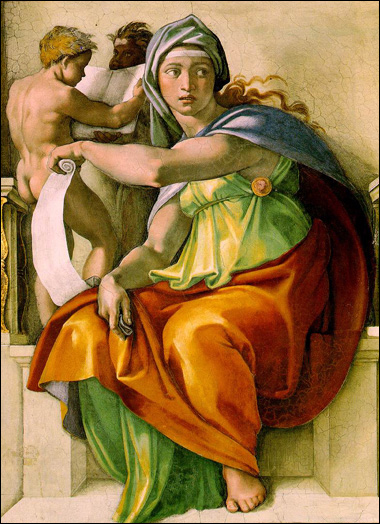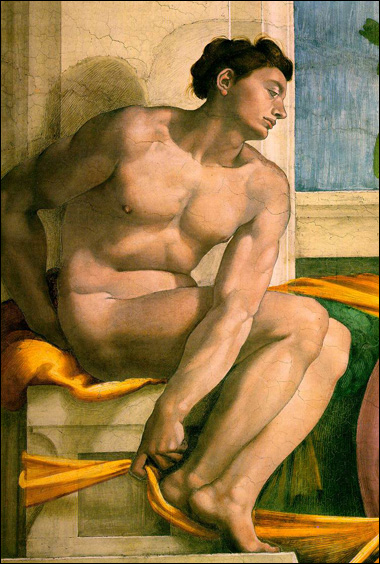Michelangelo Buonarroti was born in 1475 in Florence, Italy, and came into his own at the height of the Renaissance. For an artist of his talent and abilities, it was simply perfect timing.
Like his contemporary and rival Leonardo da Vinci, Michelangelo had a wide range of talents, including architecture, sculpture, painting, and poetry, all of which he used prolifically during the course of his life.
The tasks he undertook were immense, many of them taking several years to complete. If for no other reason, the sheer scale of some of his projects (most notably the Sistine Chapel) is enough to prove Michelangelo’s place in history.
His first works, however, were sculptures—including the Pieta (above)—which led to a commission for his most famous sculpture, the David.
Michelangelo felt most fulfilled working with marble and stone (he considered himself a sculptor, not a painter) so if the Pope hadn’t requested that he paint the ceiling of the Sistine Chapel, it’s likely that Michelangelo would have continued sculpting and left painting to other artists entirely.
Luckily for the world, Michelangelo complied with the Pope’s request, and after four years of back-breaking, demanding labor, the ceiling of the Sistine Chapel was completed.
Over 300 figures adorn the vaulted ceiling of that chapel, each of them painted solely by Michelangelo. He’d originally begun work with several assistants but it only took a short time before he became dissatisfied with the way the project was going and started over by himself, letting no one but the Pope see his progress for the first three years.
It’s hard to get a real sense of the size and magnificence of the Sistine Chapel unless you see it yourself, since any reproduction is limited to the space on a page or screen. Because of that, I’ve chosen to show just two of the figures, rather than large sections.
Suffice it to say, it’s doubtful whether any work by an individual artist will ever rival this masterpiece in scope, composition, or sheer impressiveness.
Michelangelo went on to create more sculptures, oversee architectural projects, and even paint again in the Sistine Chapel, this time on the altar wall. That fresco, entitled The Last Judgment, actually took longer than his work on the chapel’s ceiling, and is another masterpiece.
Unfortunately for later generations of art lovers, the fresco was “censored” just a short while after Michelangelo’s death, as the Church decided to diminish the nudity by painting in various bits of cloth wherever necessary.
When Michelangelo died at the age of 89 years old, he left behind some of the most ambitious works of art this world has ever seen.
And as great as his talent surely was, Michelangelo Buonarroti’s determination and constant search for perfection was what truly elevated him above the other artists of his day.
This post may contain affiliate links.



